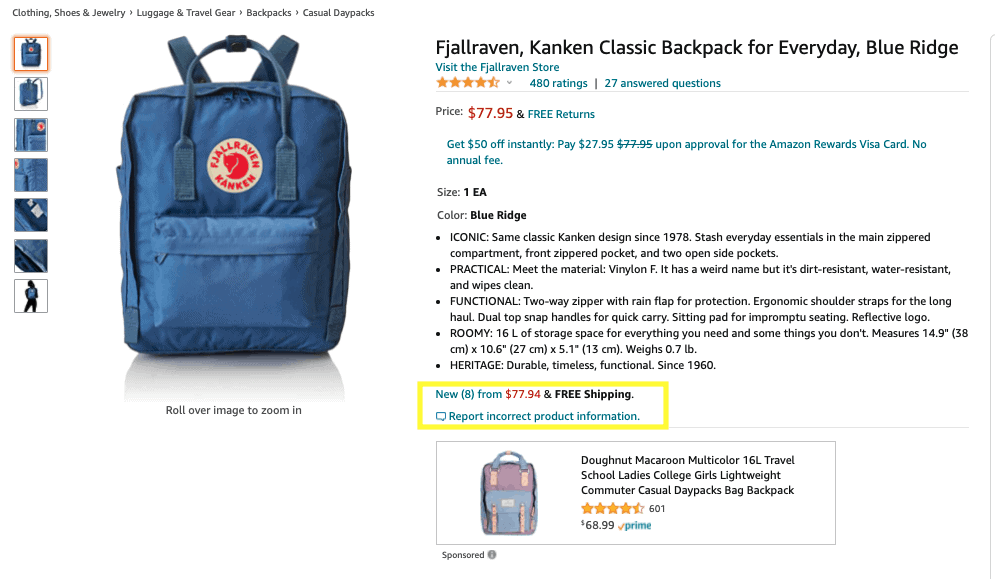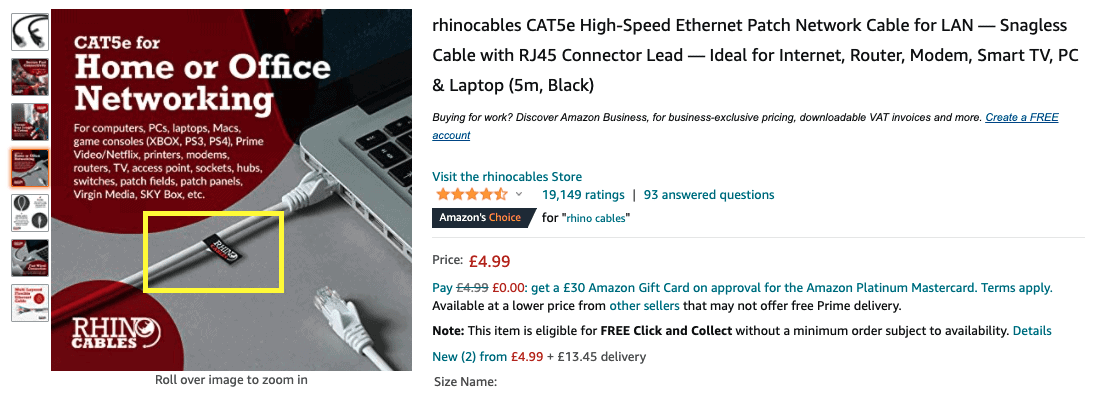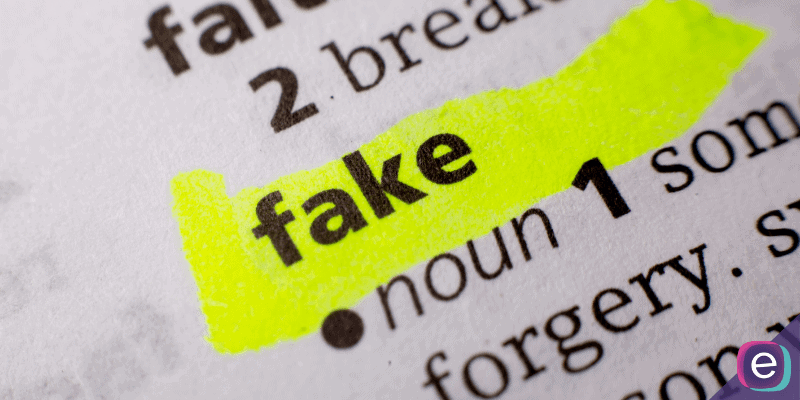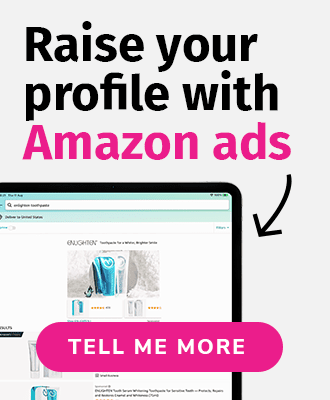Over the last several years, selling on Amazon Marketplace has exploded. The latest data for 2021 estimates there are 6.3 million total sellers and almost 1,785 new sellers joining each day. As a result, Amazon (and many sellers) have had a number of combustible problems fuelling the fire. Chief among these issues is brand hijacking, or listing hijacking, which is a direct result of nefarious sellers creating fake products and selling them on Amazon. In this blog, we’ll review what a hijacker does and how brands can prevent them. Protecting your brand’s reputation ultimately allows you to be more successful on Amazon and keep your e-commerce business running smoothly.
What is brand hijacking and when does it occur?
Amazon twists all products on the site into one respective detail page for each ASIN. This makes it easier for customers to find the best offer and consolidates the shopping experience so customers can see all the product reviews and information in one convenient location. On popular brands and products, there can be hundreds of sellers. Many sellers have gone the extra mile to set up their own brand on Amazon or create a private label brand so they can control the detail page and always own the buy box. We all know large, popular brands (like athletic shoes or designer clothing brands) are in danger of being counterfeited in general. But when there are multiple sellers on a private label brand, this can mean a few things.
- The brand approved another seller. This would be an authorised strategy.
- Someone is legitimately purchasing the brand and reselling it. This may be a case of retail arbitrage or a brand not controlling its distribution very tightly.
- There is a hijacker counterfeiting the product without the brand’s knowledge. This option can result in big problems for sellers.

An example product on Amazon.com, with 8 offers on one detail page. Sometimes, not all of these offers legitimate, authentic products.
Why is listing hijacking a problem?
Hijacking can have a huge impact on legitimate business. Customers who receive counterfeit items will likely be unhappy with their purchases. These items are usually sold cheaper, so they are able to pull in sales. Everyone loves a deal, but sometimes it's too good to be true. Occasionally customers will receive an item and be upset about the subpar quality or complain that it is a fake. This will result in high return rates and poor customer reviews, both of which can be detrimental to the real brand and seller. Even one instance of this can be an issue, but over time, this problem devalues your brand and cuts sharply into your profit.
Strategies to protect your brand
If you are a brand owner, there are many steps you can take to proactively protect your brand. Because counterfeiting is so prevalent, Amazon is also always creating new systems and programs to help protect legitimate sellers. It’s smart to keep on top of this from day one so you can reap the benefits and maximise your success selling on Amazon.
Join the Amazon Brand Registry
Launched in 2017 specifically to help brand owners and businesses protect their intellectual property, the Brand Registry is a self-service portal for sellers and vendors to ensure an accurate and authentic customer experience. Amazon is always rolling out new features for this program, including a suite of powerful marketing and Amazon Ads levers like A+ Content, Brand Stores, and Sponsored Brands advertising.
You can learn about all the benefits of the Brand Registry in 2021, but at its core, the Brand Registry was made to provide a way for Amazon to escalate and deal with IP infringement, counterfeiting, and brand ownership issues. There are also several offshoot programs, such as the Transparency program to serialise your barcodes, and the IP Accelerator program to help you get started, too.
To register for the Brand Registry, you will need a professional selling account and a registered trademark. The benefits of the Brand Registry include:
Create strong branding and a clear brand identity
Before you even start selling on Amazon, you’ll want to think about what image you’re putting out there. Ensuring your products feature a prominent logo, solid design elements and graphics, and packaging that is clearly marked as yours can go a long way to prevent issues in the first place. This is because hijackers are looking for easy targets, not complicated schemes that will not provide a quick payout.
Be sure to trademark your logo and brand name in whatever country you are selling in. If you are using graphics, keep a consistent, professional look to all of your content. This can work across Amazon main images, A+ Content, Brand Stores, on your own website, social media, advertising, and elsewhere.

Strong branding in main images on Amazon.co.uk.
For example, if your products feature a logo, you can ensure this is photographed and displayed in your Amazon listing. Clear evidence of branding in your photography helps customers know what they’re getting and discourages counterfeiting.
If you need assistance with branding and marketing efforts, eCommerce Nurse offers a range of strategic services to set you up for success on Amazon.
Create a Brand Store
For Brand Registry sellers, Brand Stores are free to create and are a great brand-building component to take ownership of the customer experience. This is a one-stop shop within Amazon that is made to display your brand. It will also provide a quick, easy way for customers to shop your brand across all of your product detail pages. A Brand Store link appears just under the title on pages for businesses with Brand Stores.

Example of a Brand Store link on Amazon.co.uk.
Need a Brand Store or Amazon Advertising assistance? eCommerce Nurse can help. Boost your brand and accelerate sales with a professionally designed, curated store on Amazon.
Control your distribution channels
Once you are selling on Amazon, it’s important to keep tabs on your supply chain and monitor your distribution. If you are letting companies resell your products without keeping tight control, you may be opening yourself up to potential problems.
Selling direct to retailers is the easiest way to protect your brand. For instance, you would only sell directly on Walmart, Amazon, or in brick-and-mortar stores. Brands that dilute the process and sell to distributors (especially as they multiply) will find the process can spiral out of their control.
Devising policies that are presented to retailers and distributors can help. You might consider having distributor agreements in place. This could include rules, such as limits on reselling, content guidelines, pricing rules, etc. Seek legal support to make sure this is done correctly, in both the US and Europe.
Monitor listings and report infringement to Amazon
Even well-prepared brands can encounter infringement on their intellectual property in the form of brand hijacking. Aside from just checking in on your live listings frequently, Amazon recently launched a tool to help monitor the number of sellers with active listings on your brand. The Brand Catalog Manager lets you view all listings from your brand being sold on Amazon at any time. It gives you visibility into who is selling your products, what kind of experience your customers are having, and what the projected sales opportunity is for each item.
Notice anything amiss? Report it as soon as possible. Sellers can report violations, using their Brand Registry status as a brand owner to take action on the potential infringement. Reporting usually gets a hijacker removed within 24 hours.
You can also have a boilerplate email to send to violators whenever you see a violation. This can scare off lower-level hijackers who don’t want legal complications.
Monitoring your listings is a great way to ensure nothing suspicious gets to customers and devalues your brand.
Get more help with brand protection
Taking these simple steps can go a long way to help ensure your success on Amazon as a brand owner. Because there’s so much to do as a seller, you may need additional help with account management tasks, such as monitoring your listings or tackling marketing initiatives. eCommerce Nurse can help take your business to the next level, no matter how big or small. Contact us for more help and information on services.




